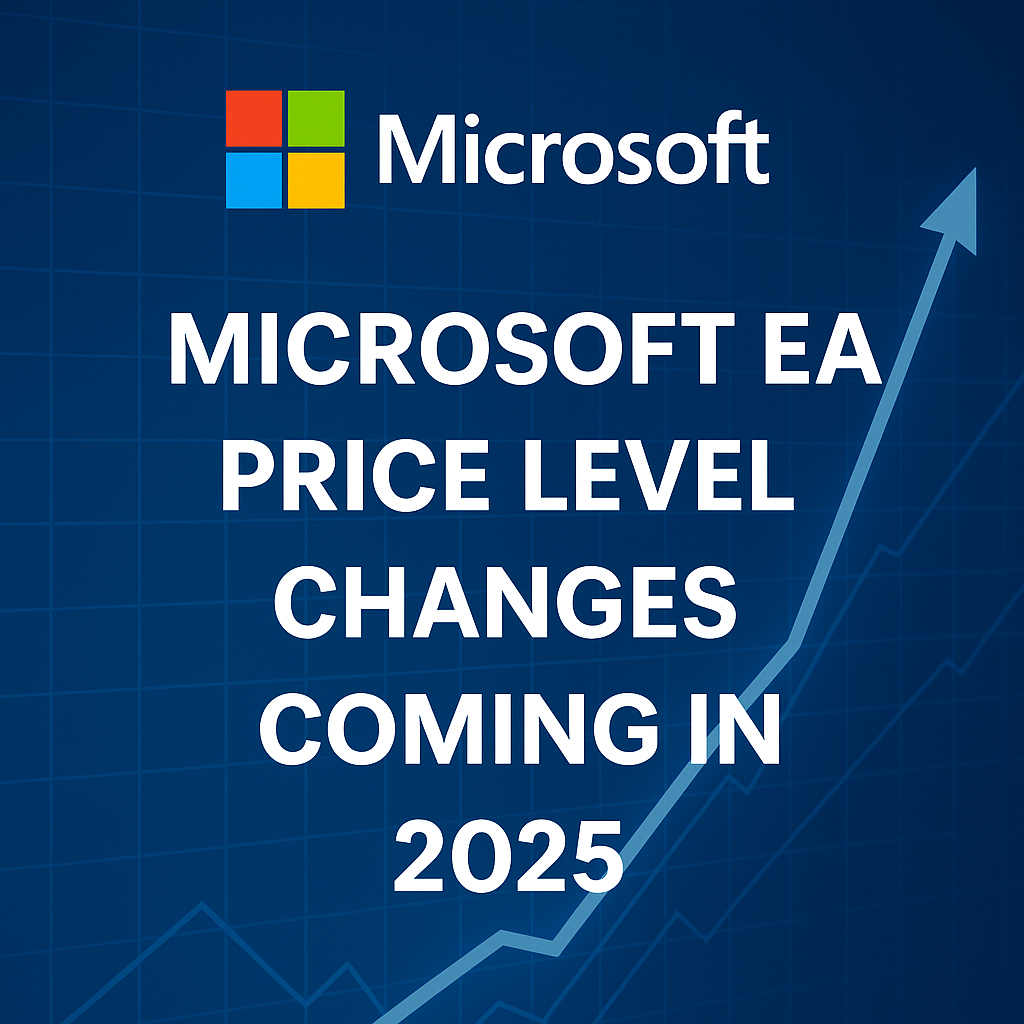The End of Volume Discounts
From November 1, 2025, Microsoft will discontinue tier-based discounts (Levels B, C, and D) for Online Services purchased under the Enterprise Agreement (EA), MPSA, and OSPA. This means that all organizations, regardless of size, will pay the Level A list price for these cloud subscriptions.
For customers who have historically benefitted from high-volume price breaks, this marks a significant shift in Microsoft’s licensing strategy. The change aligns online services pricing across all enterprise customers but may increase costs for those with larger deployments.
What Will Change — and What Won’t
The adjustment applies to nearly the entire Microsoft cloud portfolio, including:
- Microsoft 365 and Office 365 (E1, E3, E5, F1/F3 plans, etc.)
- Azure services purchased through the EA
- Dynamics 365 (all plans and modules)
- Power Platform subscriptions (Power BI Pro/Premium, Power Apps, Power Automate, etc.)
- Other cloud services licensed through the EA (e.g., Microsoft Defender, Intune, Teams Phone, Viva, and more)
On-premises software licenses will not be impacted, and education or U.S. government customers are excluded from this update. For everyone else, online services added after November 2025 will automatically be charged at Level A pricing.
The Financial Impact on Larger EA Customers
Organizations currently at Level B, C, or D pricing should anticipate price increases of approximately 6 %, 9 %, or 12 % depending on their tier. These increases will apply not only to renewals but also to any new cloud services purchased once the changes take effect.
For companies running thousands of Microsoft 365 or Azure seats, the financial impact could be significant. It’s essential to model the potential costs in advance and evaluate whether alternative licensing models — such as the Cloud Solution Provider (CSP) program — offer a better fit.
Level A Customers — New Opportunities Despite No Price Change
For smaller EA customers — typically those with fewer than ~2,400 users — pricing will remain the same since they were already on Level A. At first glance, it may seem like “no change” means no action is required. However, this shift presents an opportunity: by migrating from EA to CSP, even Level A customers can unlock benefits such as flexible monthly terms, easier license management, and cost savings through rightsizing.
CSP also opens the door to enhanced partner support, value-added services, and quicker adoption of innovations, which are not always available under the rigid EA structure. In short: even if your price doesn’t increase, your licensing strategy could still be optimized.
Preparing Your Organization
To navigate this change effectively, organizations should:
- Review their current EA agreements and identify their current discount level.
- Model the cost impact of renewal or service expansion under the new rules.
- Explore CSP options or hybrid approaches to improve flexibility and reduce risk.
- Engage early with a trusted Microsoft partner to design the best path forward, whether through cost optimization, governance, or migration planning.
At GetTech, we support enterprises in adapting their Microsoft licensing strategy, maximizing flexibility, and reducing overall spend. With upcoming changes on the horizon, now is the right time to review your EA and explore if CSP could be the smarter choice.
Ask for licensing consultation


.svg)
